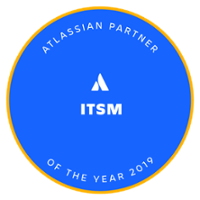ITSM is a widely used and discussed practice. But what is ITSM? What benefits does it offer? And how do you introduce or enhance ITSM practices?
In this article, we’ll explore five advanced ITSM tips that can streamline the implementation and maximize the benefits of ITSM within your organization.
What is ITSM?
Information Technology Service Management was introduced to enable IT to deliver end-to-end IT service to their customers. ITSM describes the process of managing, carrying out, and providing IT services and ways to refine and improve these systems. It includes any activity directly relating to business operations.
The history of ITSM
ITSM is broadly based on the Information Technology Infrastructure Library (ITIL) framework, which facilitates the alignment of service delivery with business needs. ITIL is the most popular framework for ITSM. While there have been several versions, AXELOS launched the newest version (ITIL 4) in 2019 to keep up with the current business climate.
ITIL and ITSM work together to provide a holistic approach to understanding and improving IT services. Together, they help organizations collaborate with their IT teams. ITIL can be broken down into two components: the four-dimensional model and the ITIL service value system.
ITIL focuses on organizations and people, information and technology (IT), partners and suppliers, and value streams and processes. The ITIL service value system focuses on the activities that allow organizations to deliver value-based output. ITIL is based on elements including guiding principles, governance, the service value chain, practices, and continual improvement.
Although ITSM initially described methods that were in place to manage IT — a kind of IT support — it’s now used to describe processes for using technologies to deliver valuable services to end-users (both customers and employees), ensure IT solution effectiveness, create cost-effective IT solutions, maintain the availability of services (both software and hardware), and support overall business objectives..
How does ITSM benefit organizations?
ITSM has become intrinsic to organizations largely because of the number of benefits it offers. To name just a few of its capabilities, ITSM can:
- Enable change management where needed
- Focus on continual improvement of service delivery to increase performance and improve workflow
- Enable faster incident resolution to help decrease the financial and reputational impacts of incidents
- Maximize the usage of IT assets, improving cost-efficiency
- Implement a service desk to provide a single point of contact, increasing overall standardization and decreasing conflicts and uncertainty within the workplace
- Manage services at several levels: configuration, financial, service, and requests
- Increase business return on investments (ROIs)
5 advanced ITSM tips for businesses
The biggest challenge with ITSM implementation is that it can get complex quickly. The reason is that current “advanced ITSM” strategies tend to focus too much on technology. While that’s warranted, it doesn’t mean that it’s the only important aspect of your business. In addition, the variety of ITSM tools available in the market makes it challenging to hone in on what you need — and how to achieve the goal.
Instead of trying to apply all ITSM practices at once, identify which components would work best for your applications and apply them based on iterations and continuous feedback. Without this focus, dependencies become too convoluted and efficient service delivery becomes clouded by unrealistic or unattainable goals.
Let’s explore five advanced tips for facilitating the process of implementing ITSM and setting reasonable goals for your ITSM practice:
- Don’t take change lightly
- Don’t be overconfident
- Follow ITIL practices
- Organization matters
- Focus on simplicity and value.
1. Don't take change lightly
Change enablement (also known as change management) is a key function of ITSM. Changes to your ITSM approach can affect things downstream in a very unpredictable way. To ensure minimal issues, it’s important to take a smart approach to change enablement. You can create a pipeline that integrates change enablement with continuous development and deployment to ensure you’re prepared for any bottlenecks you may face later on — for example — when a team switches tools.
ITSM intends to enable successful collaboration between all stakeholders, which is only achieved by creating a streamlined process. It also means that if any changes are made to said processes, these can affect activities downstream in an unpredictable manner.
A smart approach that considers issues from multiple perspectives helps eliminate these sorts of problems by implementing a change management workflow.
2. Don't be overconfident
The concept of ITSM was created bearing in mind that despite taking precautions, incidents happen. It’s one of the reasons why incident management is a critical part of ITIL.
According to ITIL, any disturbance that disrupts the service delivery process can be labeled an incident. Setting up a comprehensive incident management strategy can help circumvent excessive downtime.
Usually, companies that don’t have an ITSM strategy in place tend to manage incidents on the go. The DevOps team deals with problems as they come without necessarily having an established process. This increases the overall downtime and is an inefficient use of existing resources.
Instead of using individual approaches to resolving incidents, we recommend using a streamlined workflow that includes stages like:
- Incident reporting
- Logging and categorization
- Monitoring and escalation
- Incident resolution
Once this workflow is set in motion, you’ll be able to track incidents, prioritize them based on risk level, and escalate them to the relevant team. To tag incidents based on priority, you can use category levels like Priority 1 (immediate and requires multiple teams), Priority 2 (important but not urgent), and Priority 3 (handled by the standard support process).
The system needs to be as robust as possible since the amount of time spent handling these requests could severely impact service delivery to the end user. Investing in incident management will ensure that proactive problem management takes precedence instead of being an afterthought. Don’t underestimate the importance of proactive problem management.
3. Follow ITIL practices
As mentioned earlier, ITIL forms the basis of ITSM. While other approaches like Agile and DevOps exist, using ITIL’s flexible methodology gives you the much-needed space to experiment, implement, analyze, and iterate. It will help you devise an ITSM strategy that better fits your business needs.
According to the 2021 State of Service Management Survey, teams that have adopted ITIL’s framework for service management within their company saw a higher rate of employee efficiency. ITIL 4 also has a higher adoption rate among companies whose teams report better overall employee experiences.
Using this framework, you can harness the power of structure, scalability, and growth. It ensures your organization retains its competitive edge and is always future-ready.
4. Organization matters
Asset and configuration management is crucial to ensuring that stakeholders have access to up-to-date and consolidated information. Assets can refer to tangible and intangible components that form a part of the end-to-end service delivery. These assets need to be maintained, upgraded, and discarded depending on their usage and lifecycle to ensure accountability.
Configuration management assures stakeholders that any available resource is accurate and that configuration items (CI) are available. It’s best to create a service map tied to different services to facilitate efficient service delivery.
For example, Jira Service Management (JSM) has a tool called Insight, that helps you document your inventory and manage your assets and related configurations. Using a top-down approach, you can streamline one or two business processes, help set the base for dependencies, and build a comprehensive service map.
Furthermore, it’s helpful to track and manage inventory using automation to update or remove any assets. By implementing an aligned process, you can save yourself from countless headaches down the line.
5. Focus on simplicity and value
Further aligning with ITIL’s guiding principles, it’s important to keep things simple. When you have to reorganize your entire system, it is often recommended to start from scratch. Although that is well-meaning advice, it could mean a complete overhaul.
Instead, focus on starting right where you are. Finalize a goal depending on the value you’re offering your customers, and work your way towards that. You don’t always have to create new processes. Instead, you can evaluate current processes and update them based on your end goals. Emphasizing value helps determine what is — or isn’t — worth the time and labor.
Even when new processes are implemented, make sure that unnecessary automation and additions are removed. It’s best to keep the process as lean as possible as long as it aligns with the objective. Staying on the standard implementation path can do wonders for your ITSM strategy and prevents your teams from getting lost in over-automation and overly complex workflows.
Conclusion
An ITSM implementation can be a complicated process, but you can streamline it with the right strategy. Despite the complexities that implementation brings, ITSM is foundational to IT success. It helps businesses provide more efficient service delivery, ensuring customer and worker satisfaction. ITSM directly results in increased business growth and ROI through enhanced workflows, increased productivity, and more resilient operations.
It’s essential to choose the right tools to facilitate the process and practices. One such tool is Jira Service Management, which you can use to transform how you do business. While it was initially created to track bugs, it’s now a complete browser-based work management system that enhances organizational capabilities.
Jira Service Management offers a host of features that helps teams across your organization work more efficiently. With multiple ITSM integrations, including Confluence and Opsgenie from the Atlassian marketplace, you’ll find Jira Service Management extremely useful and supportive during your ITSM implementation.
Published: Sep 1, 2022
Updated: Feb 17, 2025


